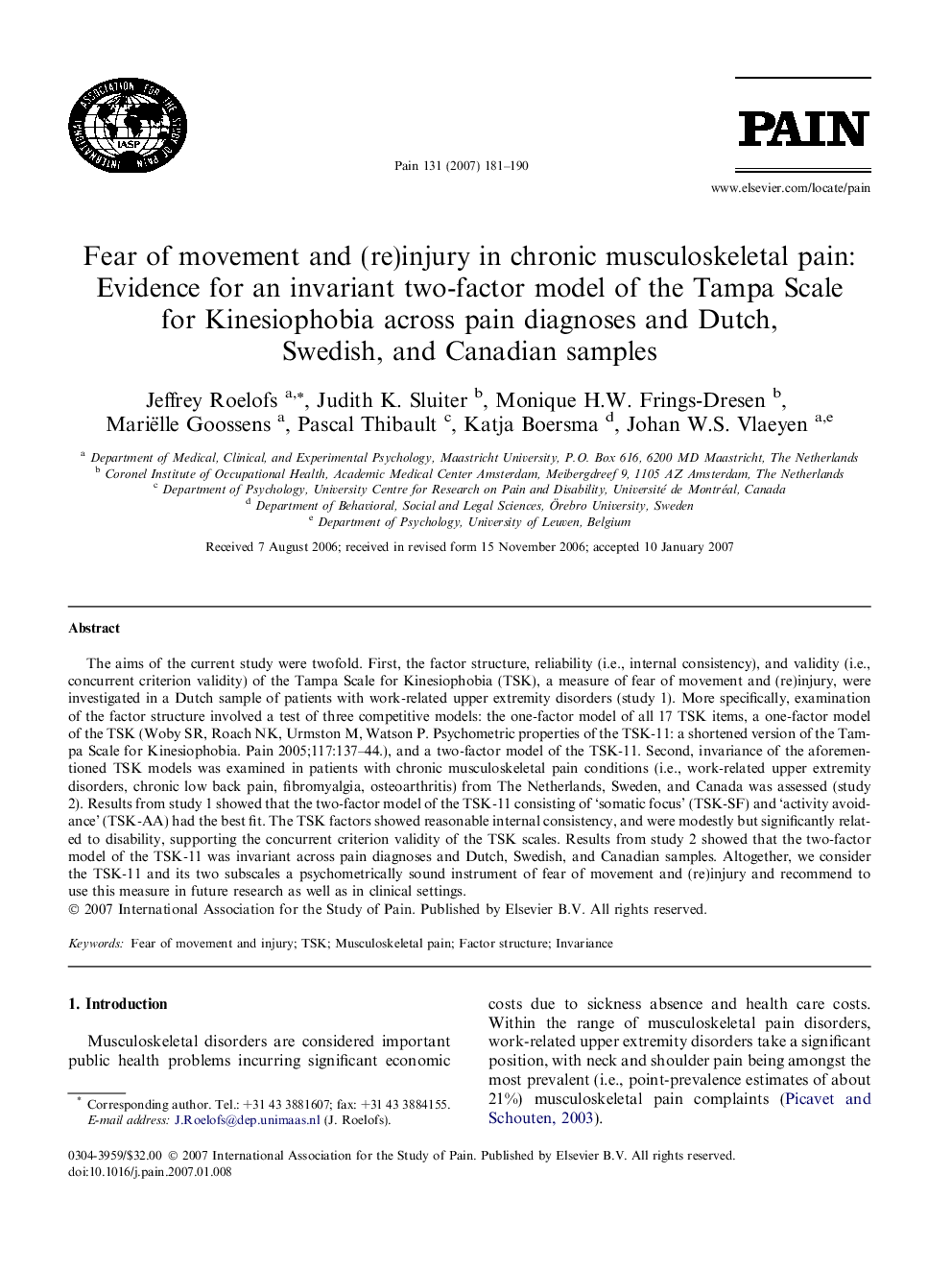| کد مقاله | کد نشریه | سال انتشار | مقاله انگلیسی | نسخه تمام متن |
|---|---|---|---|---|
| 915231 | 1473252 | 2007 | 10 صفحه PDF | دانلود رایگان |

The aims of the current study were twofold. First, the factor structure, reliability (i.e., internal consistency), and validity (i.e., concurrent criterion validity) of the Tampa Scale for Kinesiophobia (TSK), a measure of fear of movement and (re)injury, were investigated in a Dutch sample of patients with work-related upper extremity disorders (study 1). More specifically, examination of the factor structure involved a test of three competitive models: the one-factor model of all 17 TSK items, a one-factor model of the TSK (Woby SR, Roach NK, Urmston M, Watson P. Psychometric properties of the TSK-11: a shortened version of the Tampa Scale for Kinesiophobia. Pain 2005;117:137–44.), and a two-factor model of the TSK-11. Second, invariance of the aforementioned TSK models was examined in patients with chronic musculoskeletal pain conditions (i.e., work-related upper extremity disorders, chronic low back pain, fibromyalgia, osteoarthritis) from The Netherlands, Sweden, and Canada was assessed (study 2). Results from study 1 showed that the two-factor model of the TSK-11 consisting of ‘somatic focus’ (TSK-SF) and ‘activity avoidance’ (TSK-AA) had the best fit. The TSK factors showed reasonable internal consistency, and were modestly but significantly related to disability, supporting the concurrent criterion validity of the TSK scales. Results from study 2 showed that the two-factor model of the TSK-11 was invariant across pain diagnoses and Dutch, Swedish, and Canadian samples. Altogether, we consider the TSK-11 and its two subscales a psychometrically sound instrument of fear of movement and (re)injury and recommend to use this measure in future research as well as in clinical settings.
Journal: Pain - Volume 131, Issues 1–2, September 2007, Pages 181–190